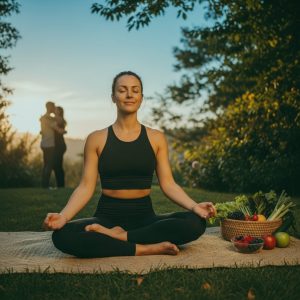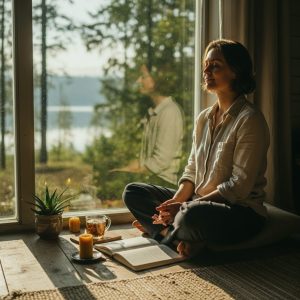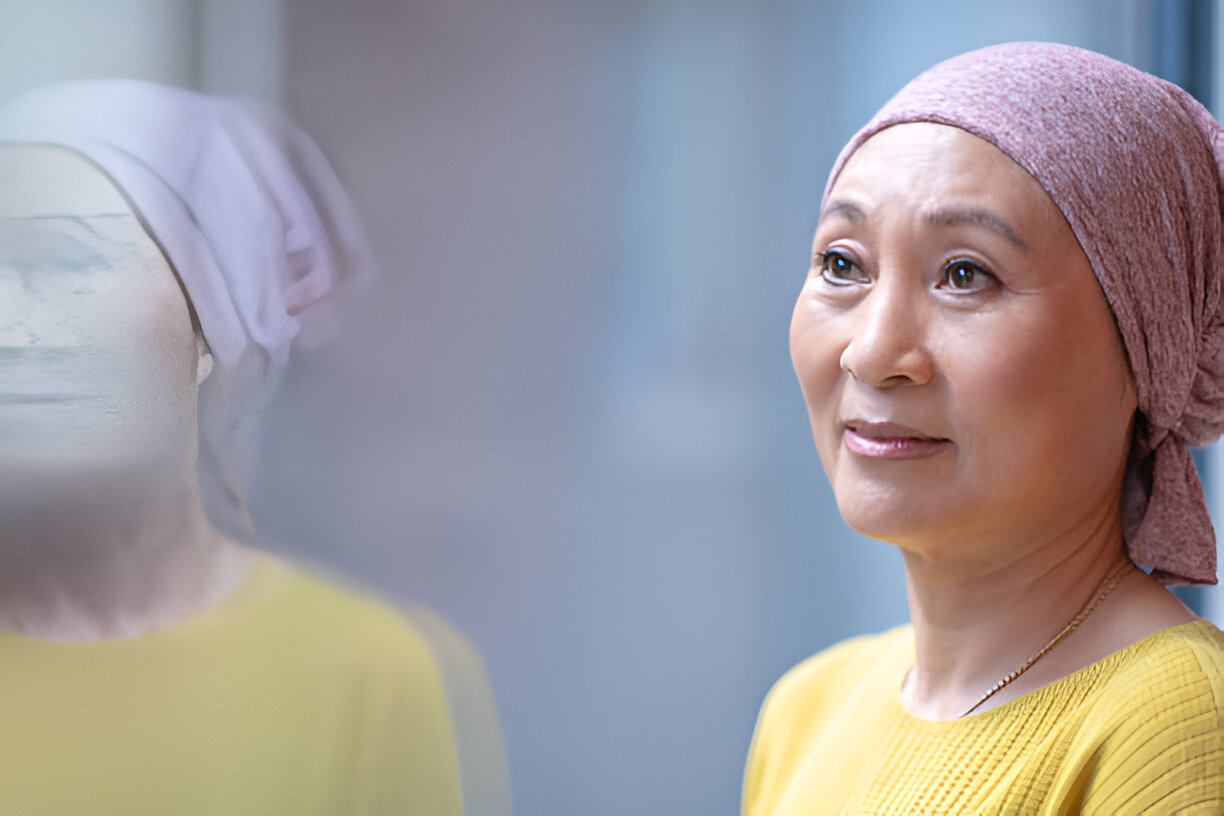In This Article
What Is Whole Living?
You may have heard the term whole living floating around in the world of wellness. Maybe you’ve seen it on a magazine cover, tucked into a podcast title, or shared in passing on social media. But let’s pause and ask the real question—what does it truly mean? And more importantly, how does it find its place in the rhythm of your everyday life? Discover how whole living can transform your daily experience.

Whole living isn’t a wellness trend or a rigid set of rules. It’s a gentle, grounded philosophy—a return to the idea that your life is meant to feel full, aligned, and nourishing in every area. It’s the understanding that you are more than your schedule, your roles, your productivity, or your bank account.
Why Whole Living Matters in a Modern World

As the saying goes:
Life is not just about making a living—it’s about living whole.
This idea is the heart of whole living. Because a life measured only in output—emails sent, bills paid, errands completed—might keep things functioning, but it won’t make your soul feel alive. A whole life is one where your body feels cared for, your mind feels clear, your relationships feel honest, and your days are filled with purpose and meaning.
Whole living is about integration, not perfection. It’s the gentle weaving together of your mind, body, nutrition, relationships, and purpose. These five core areas form the structure of your well being. Like five fingers of the same hand, they work together to help you move through life with intention, strength, and peace. In the philosophy of whole living, making your well-being a priority is essential, ensuring that every aspect of your life receives the attention it deserves.
The Cost of Living Without Wholeness

Many people are ticking boxes and meeting deadlines, but still feel exhausted. You might be succeeding at work, managing a household, or staying “on top” of your responsibilities—yet deep down, feel disconnected from your own needs and truth.
This disconnect shows up as burnout, anxiety, chronic stress, and a persistent sense that something’s missing. That “something” isn’t more effort—it’s more alignment. More gentleness. More connection.
When you neglect even one of the five core pillars, the rest start to feel unstable. And when you tend to them with care, you can achieve a sense of wholeness and well-being, feeling whole again—from the inside out.
Why These Five Pillars Matter

Each pillar of whole living—mind, body, nutrition, relationships, and purpose—represents a key dimension of your overall health. But their power lies in their interconnectedness. They aren’t meant to be balanced in isolation—they are designed to support one another.
For example, when your body feels nourished, your mind gains clarity. When your relationships feel safe, your nervous system relaxes. When you move with intention, your emotional energy rises. Every shift you make in one area influences the others.
This is the beauty of whole living—it’s a complete system of care, not a checklist. And the more you strengthen one pillar, the more naturally the others begin to align.
Let’s walk through these five shifts together. With each one, we’ll explore how to return to your center, reconnect with what matters, and begin building a life that feels deeply whole—from the inside out.
Pillar 1: Shift Your Mind – Create Space for Calm

Your mind is your inner sanctuary. It’s where thoughts are formed, decisions are made, and emotions are processed. It affects everything—from your ability to concentrate to how you perceive your day-to-day experiences. But in today’s world, that sanctuary is often filled with noise. Notifications, browser tabs, financial worries, endless tasks—the mental load is real.
When your mind is cluttered, it's difficult to feel grounded. You may find yourself going through the motions, feeling reactive, scattered, or on edge. This isn’t just an emotional experience—it’s a biological one. Chronic mental stress triggers cortisol production, disrupts sleep, weakens immunity, and contributes to long-term inflammation in the body.
Why Mental Stillness Matters

Stillness is not the absence of activity—it’s the presence of awareness. When you slow down, you can finally hear the thoughts beneath the surface. You begin to distinguish between the urgent and the important, the helpful and the harmful. This is where transformation begins.
A calm mind isn’t necessarily a quiet one. It’s one that allows you to feel without becoming overwhelmed, to think without spiraling, and to process without drowning. It’s the kind of mind that allows you to respond to life rather than react to it.
When your mind is calm, every other pillar benefits. You sleep better, eat with more intention, and listen more openly in your relationships. You’re more attuned to your body’s signals. And perhaps most importantly—you become aware of what truly matters to you. The mind, once tended to, becomes your greatest ally on the path to wholeness.
Pillar 2: Shift Your Body – Move With Presence and Respect

Your body is more than a vessel. It’s the physical home of your entire lived experience. It carries you through every season, holds the weight of your stress, responds to your thoughts, and whispers truths long before your mind can articulate them. And yet, for many, the relationship with the body is strained—marked by criticism, pressure, or disconnection.
In whole living, we don’t strive to “fix” the body. We learn to listen to it, partner with it, and honor it as a sacred ally. Whether you’re navigating age-related changes, chronic pain, pregnancy, fatigue, or simply the demands of daily life—your body deserves compassion.
Why Your Body Needs Gentle Attention

Your physical health isn’t separate from your emotional or spiritual well being. Movement supports mental clarity. Rest improves emotional balance. Hormonal health influences mood. And your nervous system reflects everything you experience.
When you move with respect—not force—you begin to rebuild a sense of safety and trust within yourself. This is essential not only for better health but for deeper peace.
When your body feels supported, everything shifts. You gain more energy, better sleep, stronger immunity, and clearer signals about what’s working and what’s not. Whole living isn’t about achieving a certain look—it’s about feeling connected to the body you live in. When you honor that connection, you create a foundation for every other pillar to thrive.
Pillar 3: Shift Your Nutrition – Nourish to Feel, Not Just to Fuel

Food is more than fuel. It’s history, culture, memory, and emotion—all served on a plate. Every bite we take is an opportunity to connect with our bodies, support our health, and experience pleasure. But in a world of diet culture, fast food, and constant noise about what’s “right” or “wrong,” nutrition often becomes a source of confusion or guilt.
Whole living reframes nutrition as nourishment—not punishment or performance. It’s not about counting, restricting, or chasing trends. It’s about learning to eat in a way that supports both your physical health and your emotional peace.
The Deeper Purpose of Nourishment

Nutrition isn’t just about vitamins and minerals—it’s about how food makes you feel. When your meals are balanced and whole, your body responds with better digestion, more stable energy, clearer skin, stronger immunity, and reduced inflammation. Your mood improves, your sleep deepens, and your cravings become more intuitive.
Nourishment also affects your gut—and your gut affects your mind. The gut-brain connection plays a key role in regulating mood, anxiety, and even cognitive clarity. So when you nourish your belly, you’re also nurturing your emotional state.
When you nourish yourself well, your body feels grounded, your mind feels steady, and your emotions feel balanced. You move from reacting to your cravings to responding to your needs. Whole living asks: how can I eat in a way that supports my body and my soul? The answer won’t come from a diet—it comes from within.
ALSO READ: Wabi-Sabi Your Life: 6 Strategies for Embracing Imperfection
Pillar 4: Shift Your Relationships – Choose Connection Over Perfection

You are not meant to journey through life alone. As humans, we’re wired for connection. Person-to-person relationships offer unique benefits, providing the kind of in-person support and understanding that digital interactions can’t always match. Relationships—whether with family, friends, colleagues, or partners—play a really special role in shaping our health and happiness. When your relationships are healthy and supportive, they create a soft place to land. But when they’re tense, misaligned, or unbalanced, they can drain your energy and even impact your physical well being.
Whole living invites you to reflect not just on who’s in your life, but how those connections make you feel. It’s not about having a large circle—it’s about having an honest one.
The Energy of the People Around You

Your nervous system responds to the emotional climate around you. Supportive relationships calm your stress response. Unhealthy dynamics—such as constant criticism, emotional unavailability, or lack of reciprocity—can keep your body in a low-grade state of stress.
Even joyful relationships require tending. Miscommunication, assumptions, or unspoken needs can slowly erode closeness. Practicing presence, deep listening, and honest conversation is how we build lasting bonds.
You can eat all the right foods, move your body daily, and journal every morning—but if you feel isolated, unseen, or unsupported, it’s difficult to thrive. Whole living honors that relationships are not extras—they’re essential. When you feel loved, respected, and safe in your connections, you’re more equipped to live with courage, softness, and joy.
Pillar 5: Shift Your Purpose – Align With What Truly Matters

At the core of every human life is a longing for meaning. Whether we’re aware of it or not, we all want to feel like our life counts for something—that we’re not just surviving the days, but contributing, creating, and living with intention. This is where purpose comes in.
Purpose doesn’t have to be grand or public. It’s not always a career path, a mission statement, or a big dream. Sometimes, purpose is quiet. It’s showing up for your daughter with love. It is when you feel like nurturing a garden. It’s choosing to heal so that future generations suffer less.
Why Purpose Gives You Energy

Living with purpose gives your life direction. It helps you move through challenges with a sense of resilience, because you’re connected to something larger than the moment. People who feel purposeful tend to experience better emotional health, greater life satisfaction, and even longer lifespans. Your soul craves meaning—and your nervous system responds when that craving is met.
Without purpose, even the best self-care routines can feel flat. But when you feel aligned with what matters, your energy rises. Your clarity strengthens. And you begin to live from the inside out.
Purpose is the thread that ties all the other pillars together. When you live in alignment with what matters most to you, you treat your body with respect, your mind with compassion, your relationships with care, and your nutrition with reverence. Purpose doesn’t just give your life meaning—it gives your choices meaning. And that’s where true wholeness begins.
The Power of Community and Support Networks

No journey toward holistic living is meant to be walked alone. The power of community and support networks is a cornerstone of true well being. When you surround yourself with people who genuinely care about your growth and happiness, you create a foundation for better health and overall wellness. Whether it’s family, friends, or a group of like-minded individuals, having a support system means you have guidance, encouragement, and a safe space to share your experiences.
Support networks provide more than just comfort—they offer motivation and accountability as you work toward your goals. When you feel comfortable and understood within your community, you’re more likely to make positive changes that benefit your physical and mental health. This sense of belonging is essential for holistic living, helping you to feel seen, valued, and empowered to live authentically.
In every season of life, your community can help you navigate challenges, celebrate victories, and remind you that you’re not alone. By prioritizing support and connection, you lay the groundwork for lasting wellness and a more fulfilling, balanced life.
How Connection Fuels Wholeness

Connection is the heartbeat of whole living. When you feel truly connected—to others, to yourself, and to your community—you unlock a deeper sense of joy, peace, and purpose. This connection nourishes both body and soul, creating a ripple effect that enhances your overall health and wellness.
In today’s digital world, connection can take many forms. Social media platforms like Instagram allow users to join communities focused on wellness, self-care, and personal growth. By making mindful choices—such as how you manage your information, choose cookies, or select optional cookies to tailor your ad experience—you can create an online environment that supports your journey rather than distracts from it.
Being part of a community that values education, care, and well being provides valuable insights and inspiration. It helps you make informed decisions about your health, and it reminds you that you’re part of something bigger. When you have control over your digital experience, you can focus on what truly matters: nurturing your sense of peace, joy, and connection as you move forward on your wellness journey.
Building Your Circle of Support

Creating a strong circle of support is a vital step in achieving overall wellness and holistic living. Start by surrounding yourself with people who uplift and encourage you—family members, friends, and others who share your values and interests. These relationships provide the emotional support and practical guidance you need to make positive changes in your life.
But support doesn’t stop with your immediate circle. Seek out professional guidance from instructors, editors, and wellness experts who can offer specialized knowledge and encouragement. Their insights can help you navigate challenges and stay motivated on your journey toward better health.
Even the companies and services you interact with can play a role in your well being. Organizations like Meta Products provide features and services—such as payment services, maps, and customizable ad experiences—that can support your wellness goals. By taking control of your cookie choices and online preferences, you can create a safer, more positive digital environment that aligns with your values.
Remember, building your support network is an ongoing process. As you grow and your needs evolve, so too can your circle of support. By prioritizing connection, guidance, and control—both offline and online—you empower yourself to live more fully, confidently, and in alignment with your vision of holistic living.
Mindful Tech Practices:
- Limit screen time during meals to improve content digestion—mentally and physically.
- Choose services that align with your values.
- Regularly review your browser settings and cookie choices; learn where your information is going.
- Pause before you accept essential cookies or optional cookies—ask how they serve your journey.
Whole living includes the digital realm. When we take back control of how we engage with technology, we protect our attention, energy, and inner calm.
Daily Practices That Keep You Whole

It’s not one big leap—it’s small, intentional steps. Staying aligned with whole living is a daily choice, not a one-time transformation. Here are some gentle, doable practices that help you stay rooted:
- Morning stillness (5–10 minutes): No phone. Just breath, intention, and presence.
- One nourishing meal a day made with whole, vibrant ingredients.
- Move your body in a way that brings joy—not punishment.
- Reach out to someone who makes you feel safe.
- Say no when something doesn’t align—even if it disappoints others.
- Ask daily: Am I living aligned with what I value today?
- Use flexible scheduling to make time for wellness practices, such as booking appointments or setting aside time for self-care.
- Connect with others or access wellness resources through video calls or video content for support and learning.
- Visit an office or in-person space for wellness support when possible.
A Final Word: Returning to Wholeness
You don’t need to overhaul your life overnight. Whole living isn’t about dramatic changes—it’s about quiet choices that accumulate over time. It’s about showing up for yourself in ways that feel real, kind, and sustainable.
You’ve already done the hardest part—becoming aware. From here, it’s about listening: to your body, to your thoughts, to your deepest needs. It's learning to trust the wisdom inside you. It’s choosing rest before burnout, connection before control, intention before urgency.
Whole living is not a place you arrive at. It’s a rhythm—a returning. Again and again. To the breath. In the moment. To what matters.
If nothing else, let this truth settle in:
You are allowed to feel good in your life. Not someday—today.



















